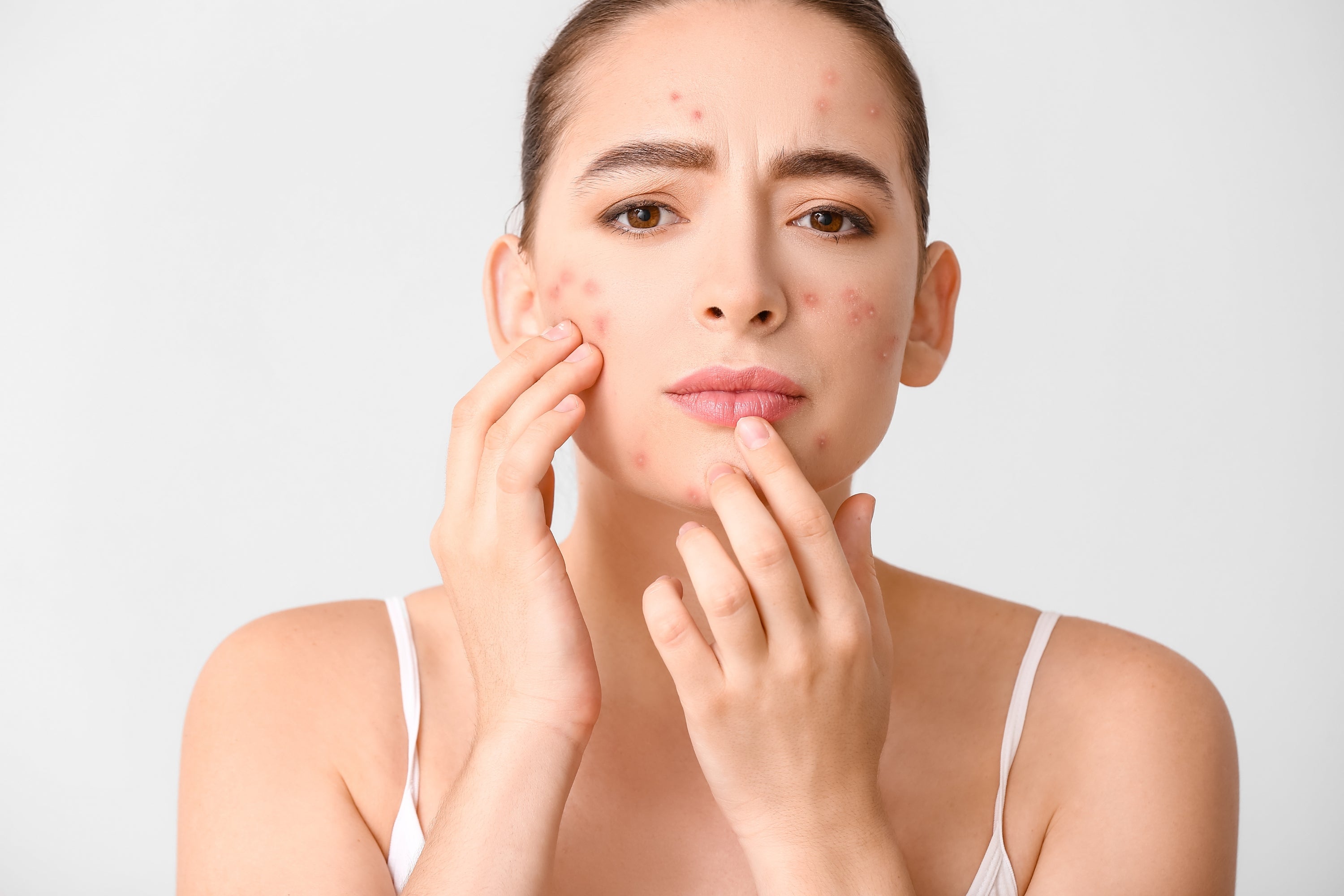
What is Acne?
Acne is a common skin concern that affects millions of people worldwide. While there are many factors or causes, incorporating the right ingredients, as well as, following a proper skincare routine can significantly help in managing acne-prone skin. However, with a multitude of information available, it's easy to feel overwhelmed and confused. In this blog, we aim to provide clarity by answering some common questions about the best ingredients for acne-prone skin and outlining essential steps and routines to keep your skin clean and clear.
Understanding the Best Ingredients
When it comes to acne-prone skin, certain ingredients have shown remarkable effectiveness in reducing breakouts and promoting healthier skin. Here are some key ingredients to look out for:
- Salicylic Acid: This beta-hydroxy acid (BHA) is famous for its ability to exfoliate the skin, unclog pores, and reduce inflammation. This makes it an ideal choice for acne-prone skin.
- Benzoyl Peroxide: With its antibacterial properties, benzoyl peroxide helps kill the bacteria responsible for acne. It also helps in unclogging pores and reducing excess oil production.
- Retinoids: Derived from Vitamin A, retinoids are potent in regulating cell turnover, preventing clogged pores, and reducing acne lesions. Using retinoids in your routine can lead to significant improvements in acne-prone skin.
- Tea Tree Oil: Known for its natural antimicrobial properties, tea tree oil helps combat acne-causing bacteria. It also possesses anti-inflammatory properties that can soothe redness and inflammation.

Designing an Effective Skincare Routine
Alongside choosing the right ingredients, establishing a consistent skincare routine is essential for maintaining clear, acne-free skin. Here's a step-by-step guide to help you design an effective routine:
- Cleanse Gently: Start by washing your face with a gentle cleanser twice a day—once in the morning and once at night. Look for non-comedogenic, sulfate-free cleansers that remove impurities without stripping away natural oils.
- Exfoliate Regularly: Exfoliation aids in removing dead skin cells and unclogging pores. However, be cautious and avoid over-exfoliating, as it can irritate the skin and worsen acne. Opt for chemical exfoliants containing salicylic acid or glycolic acid, using them 2-3 times a week.
- Treat with Targeted Ingredients: Apply acne-fighting ingredients such as salicylic acid or benzoyl peroxide to target active breakouts. Use spot treatments or serums formulated with these ingredients, ensuring to follow the product instructions for optimal results.
- Hydrate and Moisturize: Contrary to popular belief, moisturizing is crucial for acne-prone skin. Look for oil-free, non-comedogenic moisturizers that provide hydration without clogging pores. Moisturizing helps maintain the skin's barrier, preventing excessive dryness and potential inflammation.
- Protect with Sunscreen: Shielding your skin from harmful UV rays is essential, even if you have acne. Choose a broad-spectrum sunscreen with an SPF of 30 or higher. Look for lightweight, non-greasy formulas that won't aggravate breakouts.
- Hands Off! Avoid touching your face excessively, as it can transfer bacteria and irritants to the skin, leading to further breakouts and inflammation.
- Cleanse After Exercise: Sweating during exercise can contribute to clogged pores. It's crucial to cleanse your face post-workout to remove sweat, oil, and bacteria.
Multiple acne-fighting ingredients together?
Using multiple acne-fighting ingredients together can be an effective approach for addressing different aspects of acne-prone skin. However, it's crucial to introduce them gradually and monitor your skin's response. Here are some considerations to keep in mind:
- Start with a single ingredient: When incorporating new acne-fighting ingredients into your skincare routine, it's generally recommended to start with one at a time. This allows you to observe how your skin reacts and determine if any adverse effects occur.
- Patch test: Before applying any new product to your entire face, conduct a patch test on a small area of skin to check for any allergic reactions or irritation. This is particularly important when introducing multiple ingredients simultaneously.
- Gradually introduce new ingredients: Once you've assessed how your skin responds to the initial acne-fighting ingredient, you can gradually introduce additional ingredients. This staggered approach helps identify which ingredients are beneficial and which might cause sensitivity or adverse reactions.
- Pay attention to product compatibility: Some acne-fighting ingredients, such as benzoyl peroxide and retinoids, can be potent and potentially drying to the skin. It's important to ensure that the combination of products you use is compatible and doesn't lead to excessive dryness, irritation, or inflammation.
- Consult product instructions and experts: Different products may have specific instructions regarding their compatibility with other acne-fighting ingredients. Always read and follow the product instructions carefully. Additionally, consulting with a dermatologist or skincare professional can provide valuable guidance on combining ingredients effectively.
- Monitor your skin's response: Throughout the process of incorporating multiple acne-fighting ingredients, pay close attention to how your skin reacts. If you notice any signs of excessive dryness, redness, or irritation, scale back or discontinue the use of certain products. It's essential to strike a balance that promotes clear skin without compromising its health.
Take Away
While dealing with acne-prone skin can be challenging, understanding the best ingredients and implementing a consistent skincare routine can make a remarkable difference. Salicylic acid, benzoyl peroxide, retinoids, and tea tree oil are just a few of the effective ingredients to consider. Remember to cleanse gently, exfoliate regularly but not excessively, and moisturize adequately. Sun protection, avoiding face touching, and post-workout cleansing are equally important. Tailor your skincare routine to suit your specific needs and be mindful of your skin's individual response to different ingredients.
By incorporating these steps and ingredients into your skincare routine, you'll be on the path to healthier, clearer, and more confident skin.

